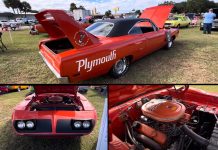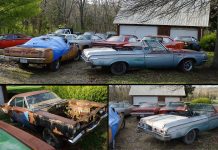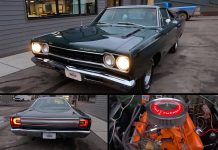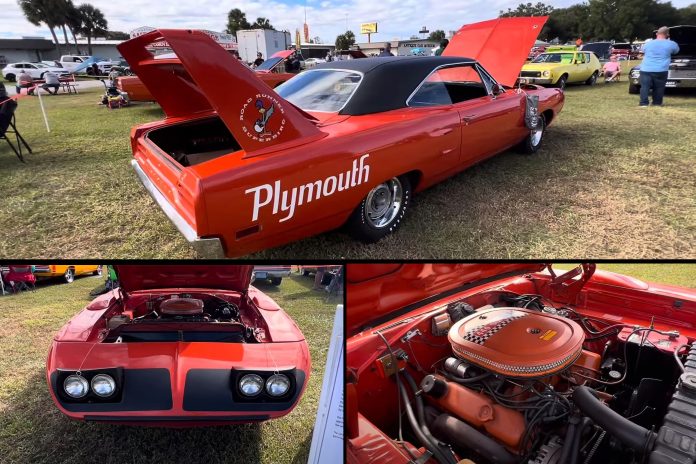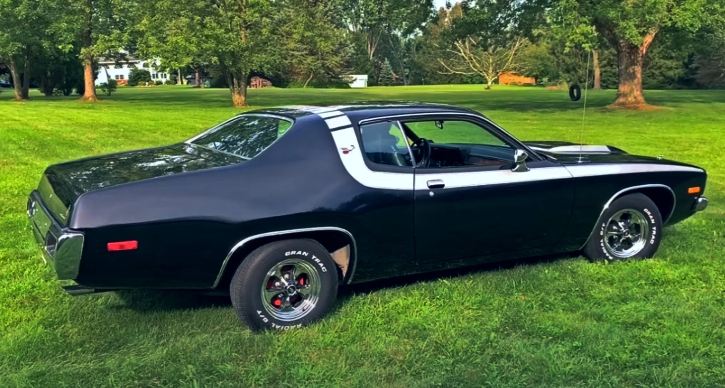Introduced in 1970, the Superbird by Plymouth was a response to Dodge’s 1969 Charger Daytona. Acting as a homologation special, it aimed to compete with its “winged warrior” counterpart on NASCAR tracks.

The Superbird closely resembled the Dodge Charger Daytona, featuring minimal cosmetic changes. Plymouth expanded its engine options, adding a six-barrel variant to the existing 440-cubic-inch RB and 426-cubic-inch HEMI.
Unlike the successful Charger Daytona, Superbirds faced challenges. Some models remained unsold until 1972, with a few even converted to Road Runner specifications. Despite nearly 2,000 units produced, the Superbird’s value lagged behind its Dodge counterpart.

While the Superbird hasn’t reached the Daytona’s value, HEMI-powered Superbirds are approaching million-dollar status. The 440 variants, especially unrestored survivors, can command prices exceeding $400,000 at auctions.

At the 2023 Mopars With Big Daddy show, a Tor Red Superbird garnered attention. Unrestored for over 50 years, this model retained original drivetrain components, including the numbers-matching 440-cubic-inch Six-Barrel V8 and automatic transmission.


Despite a paint refresh a few years ago, this Superbird remains authentic. It stands out as one of only 716 with the six-barrel 440 V8. The automatic transmission and column shifter further narrow its production to one of 408 units.


The Tor Red paint adds to the rarity, constituting approximately 14% of all Superbirds. While precise figures are unavailable, estimates suggest that only around 57 Superbirds with the 440 Six-Barrel/automatic combo and a Tor Red exterior were produced.


This Superbird, though statistically rare, exemplifies the enduring appeal of Mopar classics. After more than 50 years, it remains a stunning and drivable testament to a bygone era.
# FAQs (Frequently Asked Questions)
**Q1: How many Superbirds were produced?**
A1: Nearly 2,000 Superbirds were built, making them more common than their Dodge counterpart, the Charger Daytona.
**Q2: Why did Superbirds face challenges in sales?**
A2: Unlike the successful Charger Daytona, Superbirds struggled to sell, with some remaining on showroom floors until 1972. Some were even converted to Road Runner specs.
**Q3: What is the current value of Superbirds?**
A3: HEMI-powered Superbirds are approaching million-dollar status, while unrestored 440 variants can fetch over $400,000 at public auctions.
**Q4: What makes the Tor Red Superbird at the Mopars With Big Daddy show unique?**
A4: The Tor Red Superbird is one of only 716 with the six-barrel 440 V8, and its Tor Red exterior contributes to its rarity, with an estimated 57 units featuring this specific combination.
**Q5: Is the showcased Superbird entirely original?**
A5: While the Tor Red paint received a refresh, the showcased Superbird retains original drivetrain components, including the numbers-matching 440-cubic-inch Six-Barrel V8 and automatic transmission.
**Q6: How many Superbirds with the six-barrel 440/automatic combo and Tor Red exterior were estimated to be produced?**
A6: While exact figures are unavailable, estimates suggest that around 57 Superbirds with the 440 Six-Barrel/automatic combo and a Tor Red exterior were produced.



